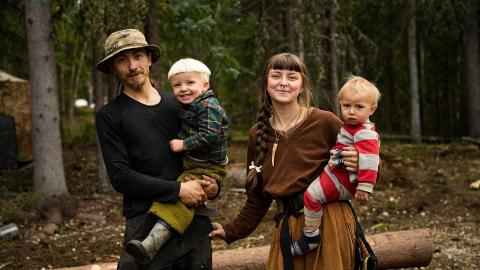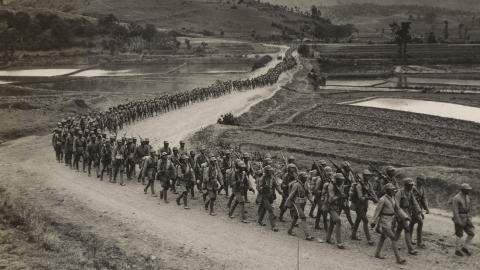Pearl Harbor
Hey Mac there is a heck of a big flight of planes coming in and the whole scope is covered.
Radar operator, Joe Lockard's warning
7 December 1941
The world has been at war for 15 months. American Japanese relations have deteriorated and US sanctions, especially on oil, now threaten Japanese designs for a Pacific Empire. US intelligence in Washington knows Japan's preparing for war.
It's a Sunday. Washington cracks Japanese coded messages. America now knows it will be attacked at 1pm Washington time. It just doesn't know where. The Philippines looks likely.
But all forces must be warned. Worried that telephone messages might be intercepted (and tip the Japanese off that their codes are broken), a telegram is sent by Western Union to the Pacific Fleet at Pearl Harbor. The warning reaches Honolulu with 27 minutes to spare. It's then given to a boy on a bicycle. He doesn't cycle fast enough. 320km North of Hawaii, 183 Japanese bombers and fighters, with another 170 following, close in. The Japanese Zero Fighter is better than anything the Americans have produced. It can fly more than 3,200km without refuelling, perfect for a surprise attack.
At 7:02am, first contact is made with radar operator Joe Lockard. He's had no formal instruction on the radar equipment he's practising on. The British have been using radar since 1935 but the US doesn't appreciate its potential. There are only five radars covering the whole of Hawaii. And they're manned only 3 hours a day. Lockard sees two bleeps on the radar. He contacts Officer Kermit Tyler, who, like Lockard, has very little training in his post. Tyler knows there's a flight of B17s due in, assumes that's what's on the screens, notes it, but doesn't act.
The Hawaii Mountains block the radar and the low flying Japanese squadron disappears from the screen. With his shift over, Lockard switches off the radar at about 7:45am. At 7:50am the attack begins. 1,178, wounded, 2,403 killed. 3 battle-ships are sunk. At 3:45pm, the boy on the bike delivers his telegram.
27 hours after the attack, America declares war on Japan, and three days later, on Germany.
Did you know?
The Japanese attacked early on a Sunday as this was traditionally the day that US services were at their slowest. As Japan is nearly 6,500km from Hawaii, an attack seemed not only unlikely, but almost unfeasible. However, this would be the first war with battles where victory could be achieved by aircraft carriers manoeuvring planes into a battle space and dominating the air without the two opposing battleships ever meeting.
Hugh Brogan: The Penguin History of the USA, The Japanese had rehearsed the attack for a year practising on a model mock up until they achieved an 80% hit rate.
















